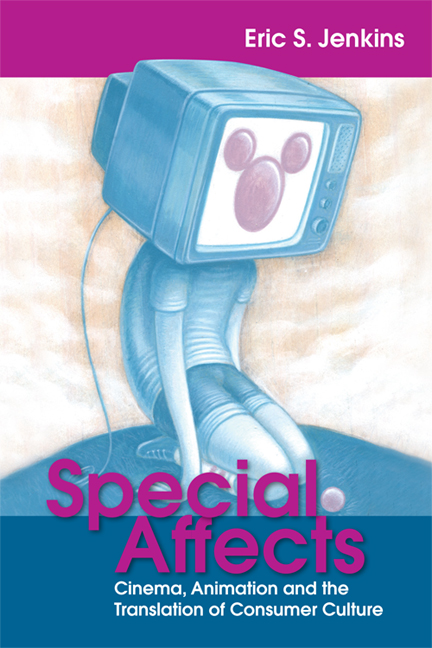Book contents
- Frontmatter
- Contents
- Acknowledgements
- List of Illustrations
- 1 Introduction
- 2 Astonishment and the Fantastic in Live-Action Cinema
- 3 Say Cheese! The Cinematic Lifestyle Consumer
- 4 Animation's Marvel and the Graphic Narrative Mode
- 5 Of Mice and Mimesis: The Wondrous Spark of Disney
- 6 Mutual Affection-Images and Daydreaming Consumers
- 7 The Disney Version of the American Dream
- 8 Walt and Wall-E in Control Society
- Movies Referenced in Special Affects
- Notes
- Index
3 - Say Cheese! The Cinematic Lifestyle Consumer
Published online by Cambridge University Press: 05 August 2016
- Frontmatter
- Contents
- Acknowledgements
- List of Illustrations
- 1 Introduction
- 2 Astonishment and the Fantastic in Live-Action Cinema
- 3 Say Cheese! The Cinematic Lifestyle Consumer
- 4 Animation's Marvel and the Graphic Narrative Mode
- 5 Of Mice and Mimesis: The Wondrous Spark of Disney
- 6 Mutual Affection-Images and Daydreaming Consumers
- 7 The Disney Version of the American Dream
- 8 Walt and Wall-E in Control Society
- Movies Referenced in Special Affects
- Notes
- Index
Summary
The movie … offers as product the most magical of consumer commodities, namely dreams. It is therefore not accidental that the movie has excelled as a medium that offers poor people roles of riches and power … The life of display that the photo had taken from the rich, the movie gave to the poor with lavish hand … It meant that in the 1920s the American way of life was exported to the entire world in cans. The world eagerly lined up to buy canned dreams. The film not only accompanied the first great consumer age, but was also incentive, advertisement and, in itself, a major commodity.
McLuhanHere McLuhan outlines a connection between classical cinema and modern consumerism that many others have since repeated. Indeed, cinema's influence on consumer culture is practically a tenet of studies of contemporary capitalism. The front cover of Guy Debord's Society of the Spectacle features cinemagoers in 3D glasses, Max Horkheimer and Theodor Adorno often equate the culture industry and Hollywood, and Jonathan Beller describes contemporary capitalism as operating through a cinematic mode of production. For these scholars, cinema represents the penultimate example of consumer culture, since it trades in images that garner attention, entice commodity fetishism and generate affection. As McLuhan says, cinema is an incentive, advertisement and itself a major commodity.
Although undeniable from the epochal angle of the modernity (or postmodernity) thesis, such accounts perform two conflations – conflating all forms of consumerism with cinema's lifestyle consumer and conflating the impact of animation and cinema on consumerism. In this chapter, I argue against these conflations, illustrating that the classical cinematic mode contributes to consumer culture in ways distinct from other forms of consumption. The classical mode makes perceivable a virtual body that will become envisioned as a lifestyle consumer, one that the culture industries will seek to sell particular commodities. While cinema retains a definite connection to consumerism, these connections, as well as the predominant theories of the emergence of modern consumer culture, become refined when understood through the perspective of affect and modes.
- Type
- Chapter
- Information
- Special AffectsCinema, Animation and the Translation of Consumer Culture, pp. 59 - 86Publisher: Edinburgh University PressPrint publication year: 2014



